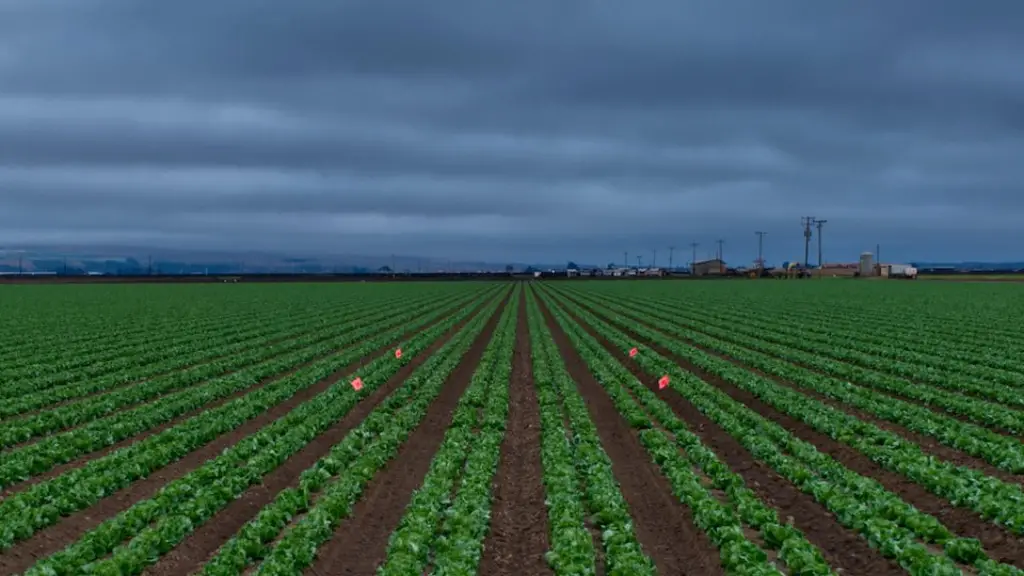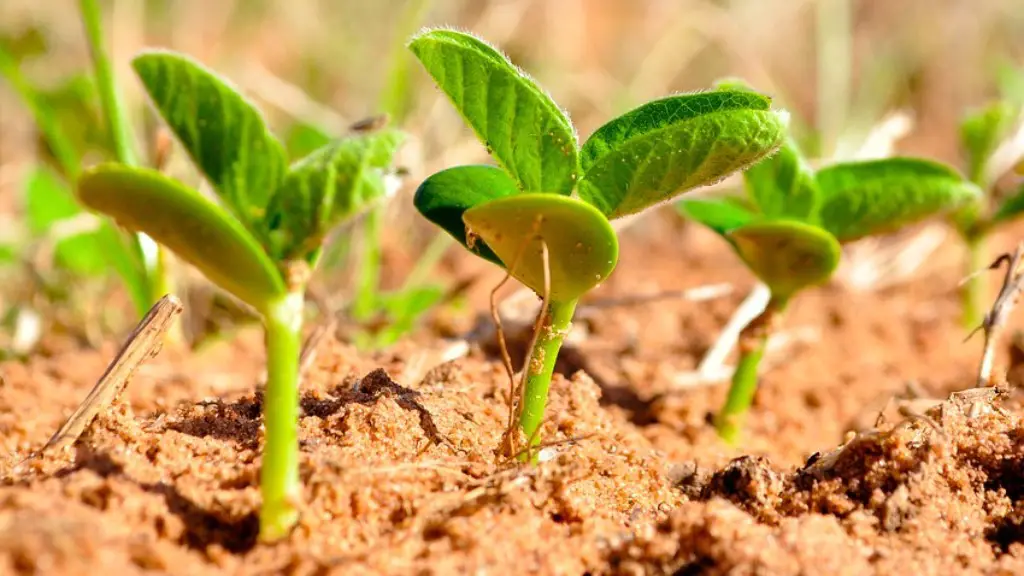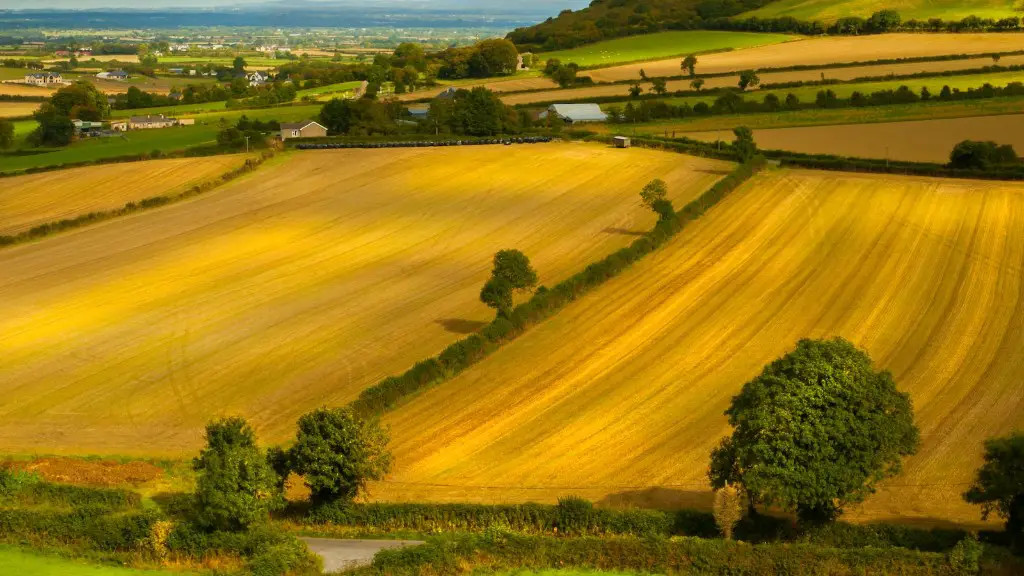Regenerative agriculture is a system of Farming principles and practices that helps heal and regenerate the land. It is based on the traditional knowledge of Indigenous peoples and farmer innovators who have been working with nature to regenerate their landscapes for millennia. The main goals of regenerative agriculture are to:
1) Capture carbon in the soil and atmosphere to reverse climate change
2) Restore and regenerate soil health
3) Support farmers and ranchers in making a living off the land
4) Create habitat for biodiversity
5) Produce nutritious food for people and animals
Regenerative agriculture has the potential to heal the planet while feeding its people. It is a win-win solution that we urgently need to implement at scale.
Regenerative agriculture is an approach to food production that focuses on rebuilding the soil and restoring ecosystem health. The goal is to create a sustainable, self-sufficient system that is resilient to the challenges of a changing climate.
There are a number of ways to regenerate the soil, including:
– Cover cropping: This involves planting cover crops (plants that are not harvested for food) in between cash crops (plants that are grown for food). The cover crops help to improve soil health by adding organic matter, improving soil structure, and reducing erosion.
– No-till or low-till: This is a method of farming that uses minimal disturbance of the soil. This helps to preserve the soil’s natural structure and quality, and reduces the need for chemical inputs.
– Permaculture: This is an agricultural system that mimics the patterns and relationships found in natural ecosystems. It involves using a wide variety of plants and animals to create a self-sustaining system that is beneficial to the environment.
– Holistic management: This is a decision-making framework that takes into account the entire ecosystem. It considers the social, economic, and environmental factors that impact the land, and strives to
What are the 4 practices of regenerative agriculture?
Regenerative farming practices are those that help to regenerate and improve the health of the soil. This is done through practices like cover crops, crop rotation, and reducing tillage. These practices help to promote biodiversity, which is essential for a healthy ecosystem.
Regenerative agriculture is a type of farming that focuses on rebuilding the soil. Farmers who practice regenerative agriculture rotate different types of crops over time. This helps limit pest infestations and nourishes beneficial microbes in the soil with a more diverse diet. Rotating between nitrogen-fixing crops like soybeans and nitrogen-hungry crops like corn can reduce the need for fertilizers.
What are the 5 principles of regenerative agriculture
Regenerative farming is a holistic approach to agriculture that aims to heal and rebuild the natural systems that support our food production. The five principles of regenerative farming are:
1. Soil Armor: Protecting and rebuilding the soil with living plants is the foundation of regenerative agriculture. Soil armor helps to prevent erosion, build healthy soils, and create habitat for beneficial insects and other wildlife.
2. Diversity: A diversity of crops and animals helps to create a more resilient and productive system. By diversifying our agricultural systems, we can reduce our reliance on chemical inputs, build soil health, and improve pest and disease resistance.
3. Continual Live Plant/Root: Keeping the soil covered with living plants and roots helps to build soil health and fertility. This also helps to suppress weeds, reduce erosion, and improve water retention.
4. Livestock Integration: Incorporating livestock into our agricultural systems can help to build soil health, improve water retention, and create habitat for beneficial insects and other wildlife.
5. Minimizing Soil Disturbance: Minimizing soil disturbance helps to protect soil health and improve water retention.
There is no silver bullet for addressing climate change, but regenerative agriculture is a powerful tool that can help reverse the trend. Here are four steps to transitioning to this type of agriculture:
1. Acknowledge the spectrum.
There is a spectrum of regenerative practices, from no-till to agroforestry. Acknowledge that there is not one right way to do things, and that different practices will work better in different contexts.
2. Agree on definitions.
There is a lot of confusion around terms like regenerative agriculture, organic, and sustainable. Work with others to agree on definitions so that everyone is on the same page.
3. Don’t get dogmatic.
There is a lot of passion around regenerative agriculture, but it’s important not to get dogmatic about it. Remember that different practices will work better in different contexts, and be open to new ideas and approaches.
4. Follow the data.
There is a growing body of evidence supporting the benefits of regenerative agriculture. Follow the data and let it guide your decisions about how to best implement regenerative practices on your farm or ranch.
How do I start a regenerative garden?
1. Refrain from tilling – this will help to preserve the existing ecosystem and prevent soil erosion.
2. Feed your plants from your compost pile – this will provide them with essential nutrients and help to reduce waste.
3. Plant a diverse crop – this will help to ensure that your garden is more resilient to pests and diseases.
4. Practice companion planting – this will help to create a more diverse and balanced ecosystem in your garden.
5. Utilize cover crops if possible – this will help to protect your soil and reduce weeds.
6. Add flowers – this will help to attract beneficial insects and pollinators to your garden.
7. Pack ’em in – this will help to reduce the amount of space required for your garden and make the most of the space you have.
8. Give the lawn around your garden a strategic trim – this will help to improve the health of your lawn and reduce the amount of work required to maintain it.
9. Use mulch – this will help to conserve moisture, reduce weeds, and improve the health of your soil.
10. Practice crop rotation – this will help to reduce the build-up of pests and diseases in your
These incentive programs are designed to promote sustainable agriculture practices that improve soil health and water quality, and help farmers conserve land and reduce greenhouse gas emissions.
Can you do regenerative agriculture without animals?
There are a number of brands that source their material from regenerative farms, not just livestock farming. Milkadamia is one such example; a plant-based brand known for its non-dairy milk products made from macadamia nuts, who have publicly committed to regenerative farming. This proves that regenerative agriculture isn’t exclusive to livestock farming, and that there are alternative, vegan-aligned sources out there who are also working towards this more sustainable form of agriculture.
Healthy soils are key to sustainable and regenerative agricultural practices. Diversity is an essential component in building healthy soils that retain excess water and nutrients. Tilling disrupts the soil’s natural structure and composition, while cover crops and mulching help to keep the soil covered and protected. Pastures also play an important role in maintaining healthy soils, as they provide a source of organic matter and help to prevent soil erosion.
What are the negative effects of regenerative farming
Regenerative agriculture is a type of farming that focuses on rebuilding the soil. While there are many potential benefits to this type of farming, there are also some potential drawbacks. Perhaps the biggest disadvantage is that farmers will need to acquire new knowledge and skills in order to implement regenerative agriculture practices. Additionally, less tilling may lead to more unwelcome plants, and some farmers may compensate for this by increasing their use of herbicides. Additionally, regenerative agriculture may result in potentially lower yields, depending on the crop and local conditions.
The 6-3-4TM refers to the Six Principles of Soil Health, the Three Rules of Adaptive Stewardship, and the Four Ecosystem Processes. It should immediately be noted that this is a highly adaptive approach and is not a prescriptive approach. The Six Principles of Soil Health are:
1) All life depends on soil health
2) Soil functions are vital to human health
3) Soil is a non-renewable resource
4) Soil health is based on biological activity
5) Soil health can be improved
6) Soil health needs to be managed
The Three Rules of Adaptive Stewardship are:
1) Keep it living
2) Keep it diverse
3) Keep it covered
The Four Ecosystem Processes are:
1) Nutrient cycling
2) Water cycling
3) Energy flow
4) Biological interactions
What are some examples of regenerative agriculture?
Regenerative agriculture is a type of agriculture that focuses on rebuilding and enhancing the soil, rather than simply using it as a resource. To do this, regenerative farmers employ a number of different techniques, including cover crops, minimal soil disturbance, and diversified crop rotations. In addition, they often use field buffers and perennial plant strips on contours to reduce soil runoff. And, where possible, they integrate crops and livestock. By using these and other techniques, regenerative farmers are able to improve the health of the soil, increase its fertility, and improve its ability to hold water. As a result, their farms are more productive, resilient, and sustainable.
A 2018 study by the Ecdysis foundation found that farmers who invest in these soil-health improving practices tend to have higher profitability than farmers who use conventional practices. In fact, these regenerative farmers were nearly 80% more profitable can conventional farmers!
What percent of farmers use regenerative farming
As Dr Kristine Nichols explains, regenerative agriculture is a land management system that works to repair, restore, and revitalize the land. It is a holistic approach that takes into account the needs of the entire ecosystem, including the soil, plants, animals, and people.
Sadly, only a small percentage of farmland in the US is being managed regeneratively. This is a missed opportunity, as regenerative agriculture has the potential to heal the land, improve food quality, and increase farm productivity.
There is a pressing need for more farmers to adopt regenerative agriculture practices. We must work to restore our land and create a more sustainable future for all.
As someone who is interested in sustainable agriculture, I believe that farmers need support while they are transitioning to regenerative agriculture. Regenerative agriculture is a more sustainable and environmentally friendly way of farming, and I believe that it is important to support farmers during the transition period. There are many studies that show that regenerative agriculture can be more profitable in the long run, but the first few years are crucial. I believe that farmers need support during this time so that they can make the transition successfully.
Does Bill Gates practice regenerative farming?
Bill Gates has a lot of land, and he has big plans for it. Unfortunately, those plans don’t involve organic, biodynamic, or regenerative farming methods, which are necessary to heal ecosystems and produce truly sustainable, nourishing food for future generations.
Live Forever Plants
These tough and easy-to-grow succulents are perfect for sunny spots with any type of reasonable soil. They don’t require much care, but be realistic in your expectations: Hens-and-chicks need to be fertilized occasionally to keep them going, and old clumps of sedum will need to be divided every few years as the plants deplete all the available nutrients from the soil where they’re growing.
Final Words
Regenerative agriculture is a type of farming that focuses on rebuilding the soil health and fertility. This is done through practices like cover crops, no-till, and diversified crop rotations. These practices help to improve the water-holding capacity of the soil, reduce erosion, and increase the soil’s ability to store carbon.
Regenerative agriculture is a holistic approach to farming that aims to regenerate the soil and ecosystem. It is based on the principles of conservation, diversity, and resilience. Regenerative agriculture has the potential to reverse the damage that has been done to the environment by industrial farming practices. It is a more sustainable and regenerative approach that can help to restore the natural balance of the environment.





